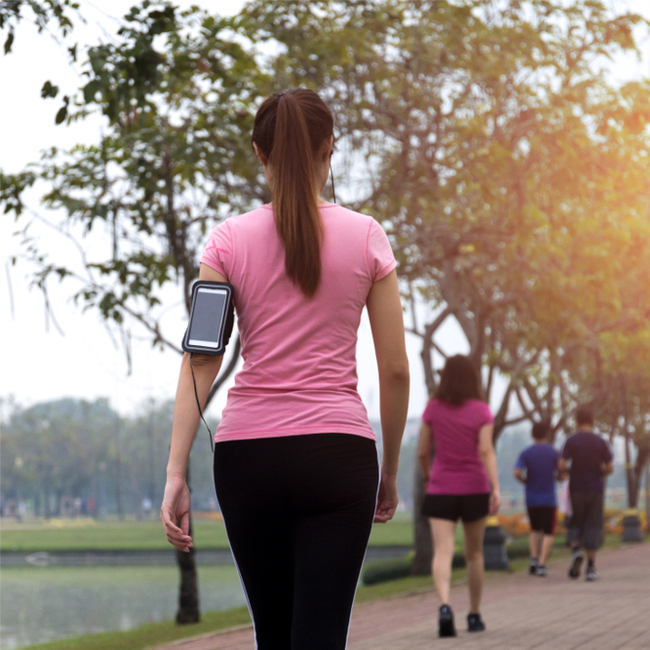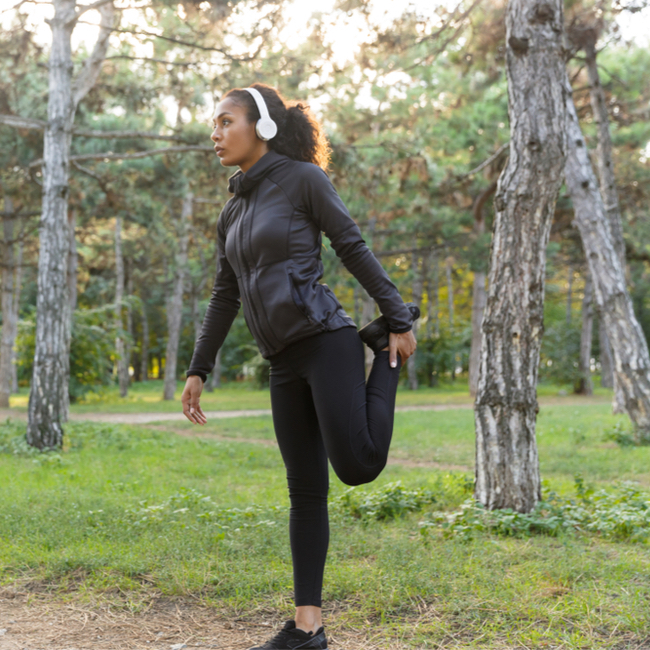There are an endless number of exercises you could be doing in order to lose weight, and finding the one you enjoy the most will ultimately allow you to create the best relationship with fitness and provide you with the best results. If you’re just beginning to exercise or struggle with joint or muscle pain that impedes on your ability to do high intensity workouts, walking may be the best fit to help raise your heart rate and improve your overall wellness without putting your body at risk.
We spoke with Jennifer Scherer, B.S., ACE-CPT/OES/FNS, MES, President and Owner of Fredericksburg Fitness Studio who outlined the best walking routine to integrate into your workout schedule for the best results, boosting calorie burn and bringing you one step closer to healthy weight loss.


Utilizing Intervals
When done at a higher level of intensity, walking is actually one of the most effective forms of exercise for elevating your heart rate, with Scherer noting that boosting your heart rate 60-80% will be the most beneficial range for effectively stoking fat loss. While a leisurely walk may have a calming effect and can be great for your mental health, pushing your body on your walk to maximize your cardio session will solidify calorie burn without spending hours in the gym.
“It is important to include intervals when you are using walking as a method for weight loss,” explains Scherer. “For example, including hills in your walking routine by alternating between flat terrain and hilly terrain is a great way to increase the amount of calories burned, thereby promoting weight loss. You may also include intervals of power walking with moderate-paced walking in order to focus on burning more calories.”
Whether you’re walking on the treadmill or outside, integrating intervals of hills at a more difficult intensity and speed will be most useful in burning calories, which is where the ‘12-3-30’ TikTok treadmill trend can actually be particularly useful. Following these intervals will challenge your body, in turn elevating your heart rate and ensuring your walking workout will net you the results you’re looking for. “It is best to wear a heart rate monitor or activity tracker that measures your heart rate in order to monitor your intensity and keep your heart rate in the fat burn zone throughout the walk,” suggests Scherer.

If you’re wondering if there’s any benefit choosing a treadmill versus walking outside, Scherer assures that they’re both great for weight loss and can have the same impact on your body, given you’re adequately exerting yourself. “If you choose to use a treadmill try not to hold on to the side-rails or front handles because it is important to use your arms to aid in keeping your heart rate elevated and to make the workout,” she notes.
As for walking outside, intentionally opting for uneven terrain or a particularly hilly neighborhood will make your workout that much more difficult, challenging your lung capacity but also working to increase your heart rate. “Whether you choose to walk inside on a treadmill or outside, remind yourself to stand tall with your shoulders positioned above your hips and breathe steadily.”
Walking for exercise for an hour around three times a week is almost assured to help you achieve healthy weight loss, but this is also largely dependent on following a balanced and nutrient dense diet as well. “Start timing the walking workout AFTER you achieve 60% of your maximum heart rate and then work to keep your heart rate in the 60-80% zone for the entire 60 minutes,” suggests Scherer, explaining that this will be the best way to ensure you’re actually burning as much fat as possible during your workout session.
It is worth noting that if you want to optimize your workout plan, integrating a day or two of strength training will build your muscles and provide a natural improvement to your metabolism, but walking offers a great base plan that can transform your body without a gym membership.


























